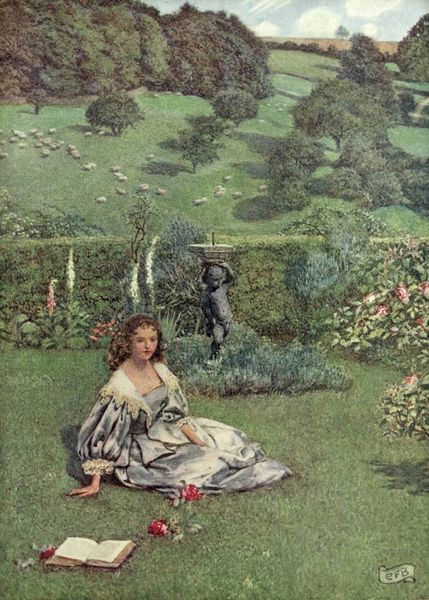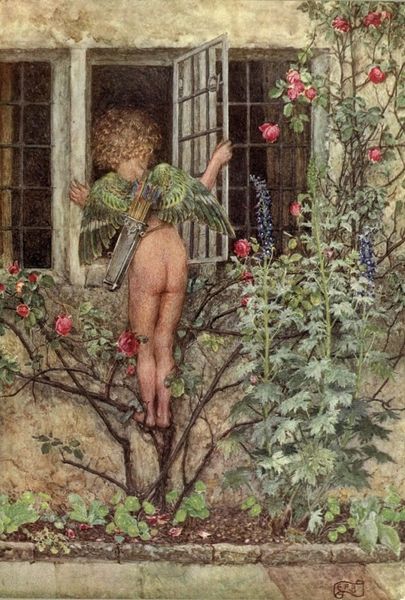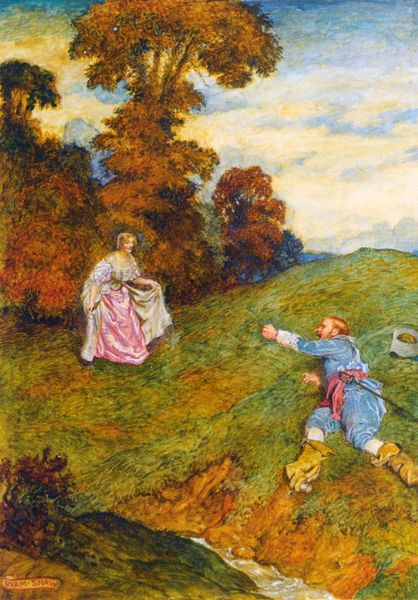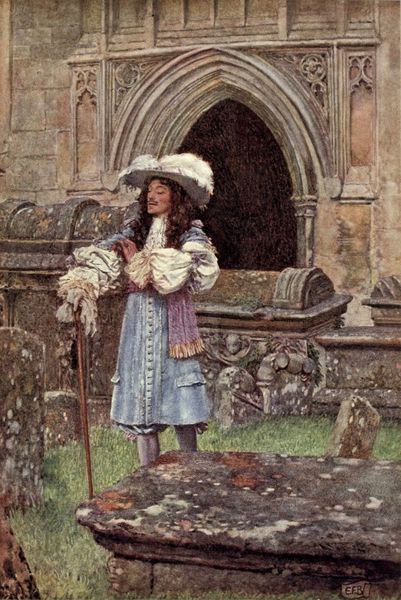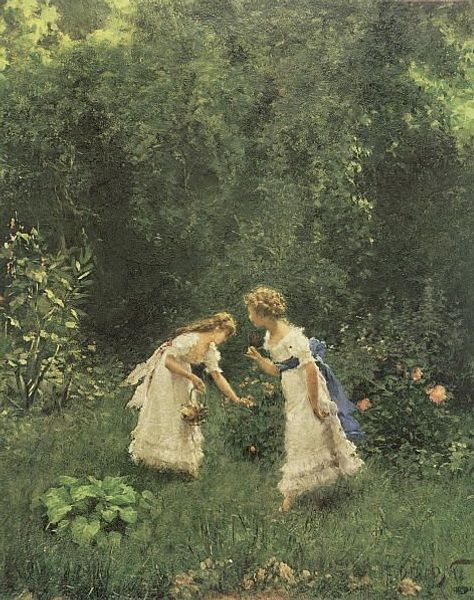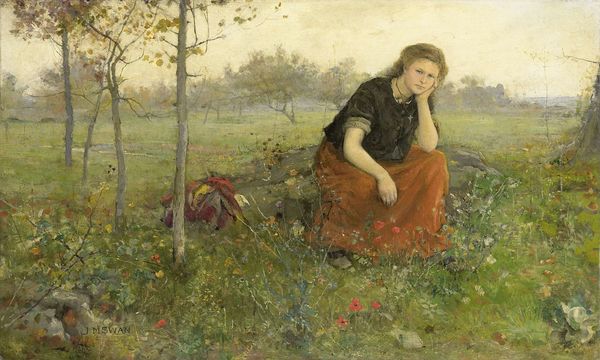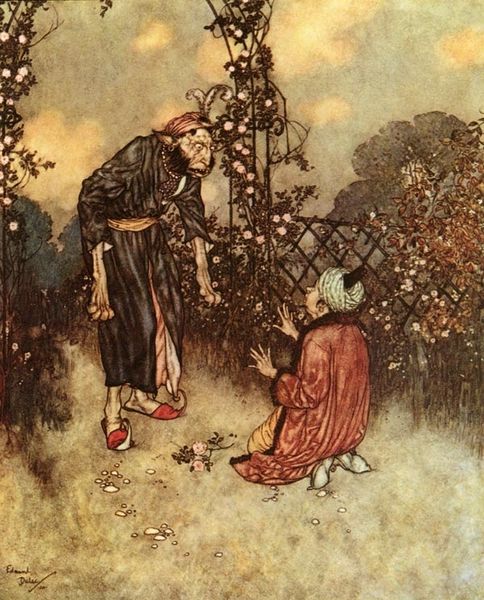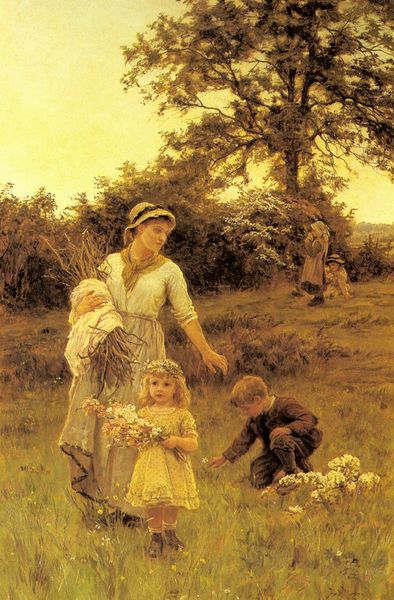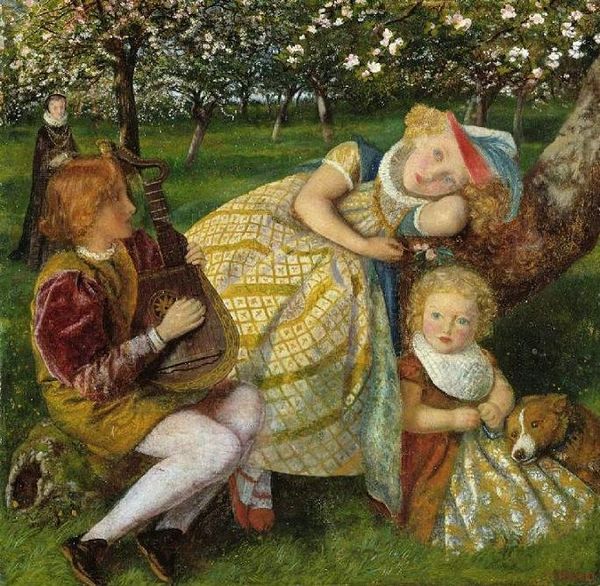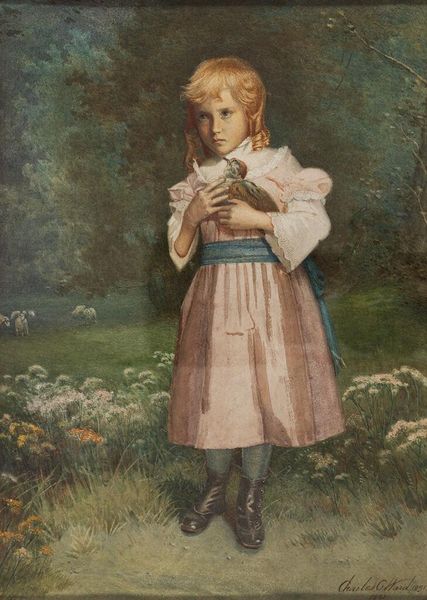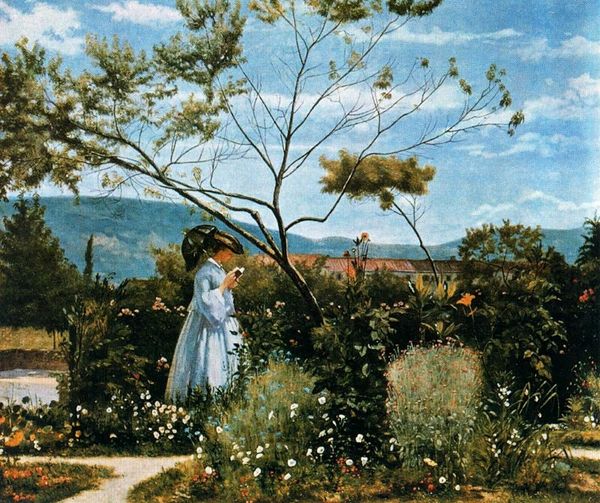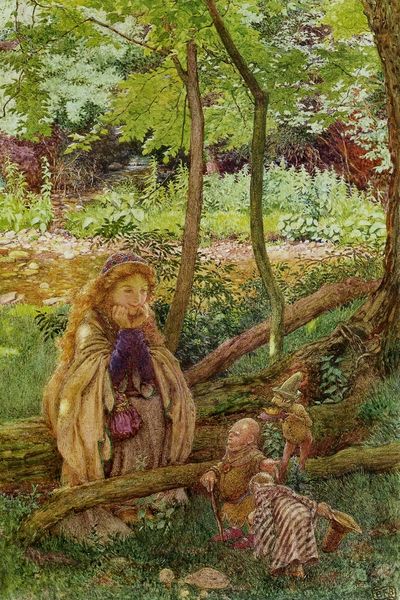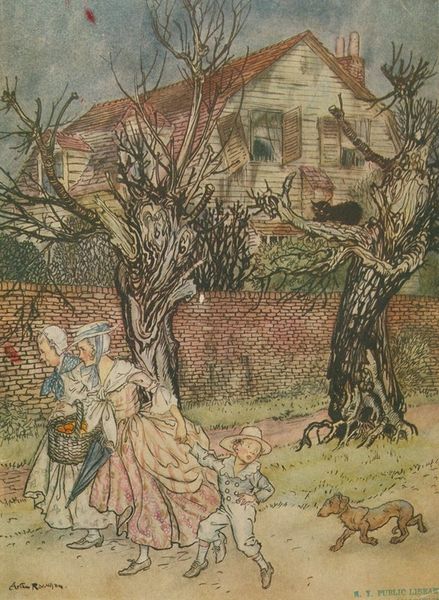
Copyright: Public domain
Curator: This is Eleanor Fortescue-Brickdale's "A Hue and Cry After Cupid," completed in 1920. The medium is oil paint. Editor: What a striking tableau! It’s giving me a sense of melancholy—a pursuit, yes, but one tinged with autumnal colours and a certain stillness. There’s a subtle drama embedded in this composition, especially with the large dark dress of the main figure set against the bright greens beyond the garden wall. Curator: Precisely. Note how the artist contrasts the focused energy of the chase in the background with the quiet, almost frozen poses of the foreground figures. The cupid himself seems distracted by the rose bush at the very bottom of the scene. It creates a visual allegory that elevates the entire narrative beyond simple storytelling. Editor: Allegory, certainly. Though I also consider how Fortescue-Brickdale frames women in this era of increasing suffrage and autonomy. The woman, rendered with detailed precision, appears confined—by both her garments and the physical stone barrier before her—while Cupid remains at her skirts, tethered to an idea of sentimental love that she looks beyond. It reflects societal tension as much as romance. Curator: An intriguing interpretation, locating potential discontent within the painterly precision of her style. Observe how Fortescue-Brickdale masterfully utilizes line to create the receding landscape, directing the eye towards a vanishing point. Her choice of impasto enriches certain areas, enhancing their material presence. The roses, the stonework. These areas of heightened visual interest build a sense of palpable tension. Editor: Yet it is Cupid who holds a peculiar agency here: simultaneously infantilized and weaponized, he is both an embodiment of traditional femininity and an ambivalent weapon whose targets are at best ill-equipped to recognize his power or even existence. Curator: He appears to choose blooms over bows. And maybe, within his own agency, there is more play between traditional ideals than the painting initially suggests. The symbolism opens toward myriad readings if we acknowledge the details of both the subject and setting, yes? Editor: An endless, refractive romanticism. Curator: A love that echoes even now.
Comments
No comments
Be the first to comment and join the conversation on the ultimate creative platform.
